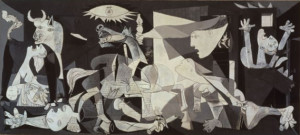I am rather fortunate, in that aside from a few trips back east and to the south, I have never been forced to confront slavery head on. Academically I’ve considered it, particularly when studying the Civil War and the rise of its romanticism in the south. I’ve read through databases of shipping manifests from Trans-Atlantic slaving companies and looked at plantation agriculture from an environmental perspective. However, living in the west for my entire life, I’ve been rather sheltered from the ever-present knowledge that this country that so loves its freedoms (or claims to, anyway) was built on the backs of those who had every freedom stripped from them. This series of essays was eye-opening to me, as I had never had to consider what difficulties interpretive sites in formerly slave-holding areas would have to confront in telling the story not just of our soldiers or presidents but of the people they owned as well.
This made me rethink the last trip I took, which was not to a place where slavery was legal for a time, but to the battlefield at Little Bighorn. It was quite a few years ago, but I seem to remember that it had surprisingly little information on Native Americans for a site commemorating a cavalry unit that was ambushed by them. I have a more difficult time remembering the Civil War sites I visited (that trip was nearly 15 years ago), but I don’t recall seeing much on slavery at any of them, either in the North or the South. I certainly have a new appreciation for the difficulty the National Park Service has in attempting to present a factual and uncontroversial site. Unfortunately, it is clear from these essays that some controversy is going to be unavoidable, whether you choose to only present the positive or appealing history of a place, or attempt to include all of it, and I agree that we should be working toward a more inclusive and accurate depiction of our own history.


